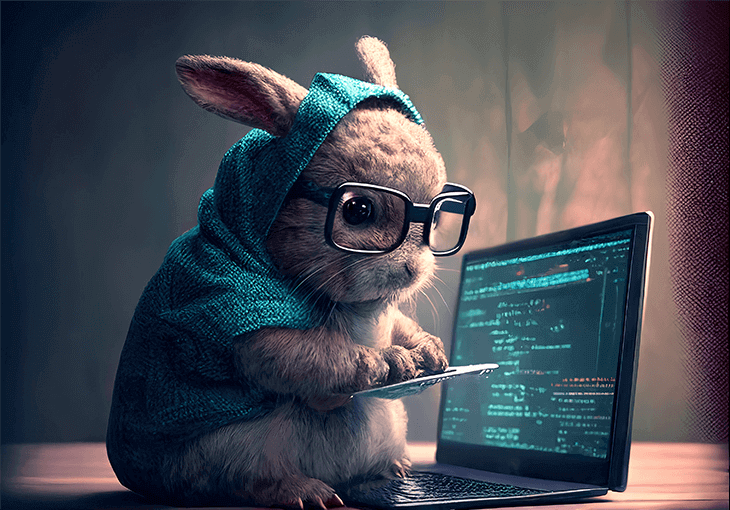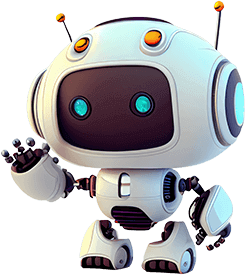Generative AI: The Future of Software Development Productivity
It’s not a secret that Artificial Intelligence (AI) has already transformed several industries, and has the potential to do it for several others, including software development. In today’s fast-paced, volatile and uncertain business environment, software development is now considered as a strategic capability, but one that needs to keep up with these new times. Therefore, software development, as an industry, needs to focus on becoming more efficient, increasing its productivity. When we analyze the necessary capabilities for building software, we still see a big potential for improvement, by incorporating more efficient and less expensive practices.
AI has always promised such improvement, by reducing repetitive tasks, on analyzing data and detecting patterns. So, it is only natural that such tools can and will also be applied to software development, in tasks such as automating jobs, improving code quality, and streamlining procedures.
Nonethless, it is our view that AI for software development is not something that will replace human software developers. Rather, we believe the future will be achieved by building a team of human and AI that can reduce the time and effort needed for building new pieces of software.
In this post we will explore how AI can be used for building such human-AI team.

AI Streamlines Software Development Process
Let’s follow the example of Sarah, a brilliant but always swamped coder. She feels like constantly playing catch-up. Bug fixes piled up, and new features seemed like distant dreams. Then, a new teammate joined the team: Aiden, an AI assistant.
Aiden wasn’t here to replace Sarah. Instead, he became her secret weapon. He devoured mountains of code, learning Sarah’s style and the project’s inner definitions. Soon, as Sarah typed a function, Aiden would suggest clever code snippets, automating repetitive tasks. Entire blocks of boilerplate code – the mundane, essential groundwork – materialized at Sarah’s fingertips, freeing her to focus on the creative spark.
But Aiden’s talents went beyond code completion. He became a tireless bug hunter. Sarah used to spend hours meticulously combing through lines of code, but Aiden could analyze the entire codebase in minutes. He’d point out potential errors, inconsistencies, and even predict future problems before they arose. Sarah felt like she had a guardian angel watching over her code.
The impact was undeniable. Sarah was churning out features faster than ever before. The quality of the code improved dramatically, and those pesky bugs became a distant memory. The team morale soared. They weren’t just coders anymore; they were collaborators, working alongside an AI to build something truly special.
What this story tells us is that repetitive processes such as code reviews and testing are ideal candidates for automation with AI. AI-powered technologies may scan code for potential defects and vulnerabilities, leaving developers’ time for more creative and strategic tasks. Predictive analytics enabled by AI can detect areas where code quality may degrade, allowing developers to address potential issues before they become problems. Furthermore, AI can improve project management by optimizing resource allocation and offering data-driven insights to aid decision-making.
How Generative AI Benefits Developer eXperience
 The story wasn’t over yet. Sarah’s newfound efficiency opened a new chapter: the world of generative AI. Imagine Aiden, on steroids. This new AI, let’s call her Vera, could not only complete code and find bugs, but she could also dream up entirely new possibilities.
The story wasn’t over yet. Sarah’s newfound efficiency opened a new chapter: the world of generative AI. Imagine Aiden, on steroids. This new AI, let’s call her Vera, could not only complete code and find bugs, but she could also dream up entirely new possibilities.
One day, Sarah was describing a complex user interface element – a struggle to explain with clunky code. Vera, ever the eager teammate, chimed in. “What if,” she suggested, “we use a generative model to create different variations of the UI based on user data? We could test them all and see which one performs best.”
Sarah’s mind raced. This wasn’t just automation; it was unleashing creativity. Vera could take her rough ideas and spin them into a dazzling array of options, allowing Sarah to pick the perfect fit. No more endless brainstorming sessions or clunky prototypes – Vera could generate them in real-time.
The benefits went beyond Sarah. Vera became a mentor for junior developers. Stuck on a design choice? Vera could conjure up different design patterns based on best practices. Need help understanding a new library? Vera could not only explain the functions but also generate code samples that seamlessly integrated with existing code.
The developer experience transformed. Repetitive tasks became a distant memory. The focus shifted from the mundane to the magical – crafting innovative solutions and pushing the boundaries of what software could do. The team, empowered by generative AI, became a force of innovation, their collective creativity amplified by a powerful AI teammate. In this new world, developers weren’t just coding; they were architects, shaping the future alongside their ever-evolving AI companions.
AI and Team Collaboration
As mentioned, these new tools would not replace human developers. Nor it will make them isolated beings. They can also improve communication and collaboration.
In the past, the complex design choice that Sarah had to go through might have led to misunderstandings and delays. But now, Vera stepped in. She analyzed Sarah’s code and project notes, then generated a clear, concise visual representation of the concept – an interactive prototype that the designers could play with and understand intuitively. Suddenly, a technical hurdle became a collaborative playground.
Vera’s reach extended even further. She could analyze team communication, identify potential roadblocks arising from unclear instructions or conflicting priorities, and then generate prompts to help bridge the gaps. Imagine a teammate on a different time zone missing a crucial decision. Vera could not only summarize the discussion but also generate different scenarios and their potential impacts, fostering a more informed and inclusive decision-making process.
The result? Team meetings became laser-focused, communication flowed more smoothly, and everyone felt heard and valued. Silos between departments crumbled as Vera fostered a collaborative spirit, ensuring everyone was on the same page and working towards the same goal. The team became a well-oiled machine, with each member’s strengths amplified by a shared AI teammate who understood not just the code, but also the intricate dance of human collaboration.
GBH embraces the future
Yes, we know this scenario is not real as of right now, but at GBH, we embrace the future of AI, and we’re constantly exploring new ways to leverage its power.
For software matters, we are already using an AI-powered code analysis tool to detect potential bugs and vulnerabilities in code, saving our developers valuable time and ensuring our clients receive high-quality software, while also already working with advanced code generation tools. This commitment to staying at the forefront of AI allows our developers and engineers to utilize powerful tools and strategies, fostering creativity and enabling us to deliver exceptional solutions that exceed our clients’ expectations.
Let’s talk about your next project!
